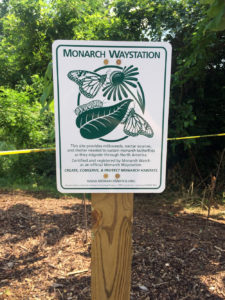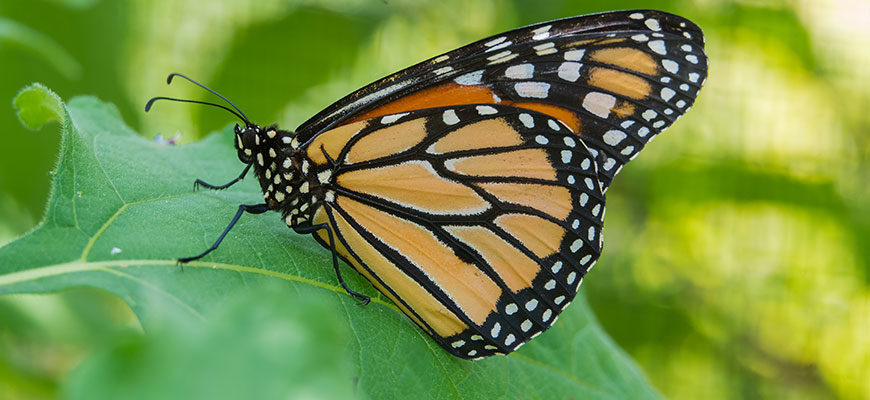Did you know that monarchs are the only butterflies in the world that complete a two-way migration each year? The monarch butterflies that you see in Kentucky each summer are the grandchildren of monarchs that flew north from Mexico in the spring. At the end of the summer, our monarchs will fly to Mexico — a place that they’ve never been before.
Monarch butterflies are the butterfly rulers of the continent. They migrate between the United States and Mexico and do not observe boundary lines — but they are vulnerable.
Monarchs face challenges on both sides of the border. Deforestation in Mexico has reduced their overwintering sites. Pesticides and habitat loss make it hard for monarch caterpillars and adults to find food in the United States. There are ways that you can help.
Just like a car or a plane, monarchs need fuel. Instead of gas stations, they stop at flowers! Nectar is full of energy; just a sip can carry a butterfly for many miles. But there aren’t as many flowers as there used to be. You can give them a pit stop — a Monarch Waystation!
 What is a Monarch Waystation and How Can I Make One?
What is a Monarch Waystation and How Can I Make One?
Making a Monarch Waystation is easy. You just need a garden space with a few specific flowers planted to provide nectar for monarch butterflies and leaves for their caterpillars. You can even have your garden certified and placed on the Monarch Waystation Registry. Make one in your yard or even at your local school or library!
For help with Monarch Waystations, including requirements and seed kits, click here!
Are There Other Ways to Help?
If you can’t make a Waystation, there are lots of other ways to help Monarchs. Find out more by clicking here.
The Louisville Zoo is a certified Monarch Waystation
We are proud to announce our new affiliation with the Monarch Migration Station which we believe is an important part of the effort to help preserve the monarch migration cycle.

